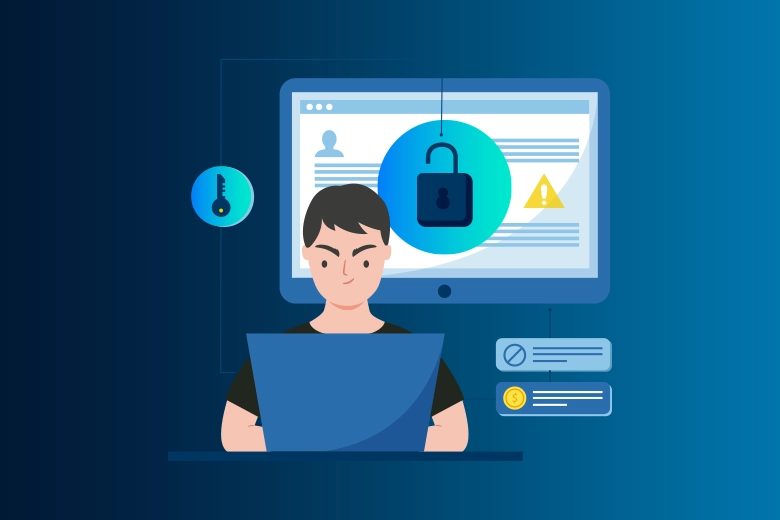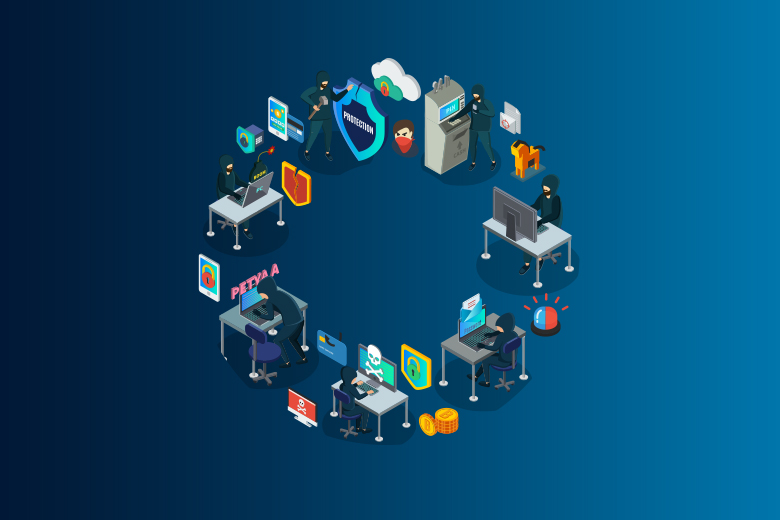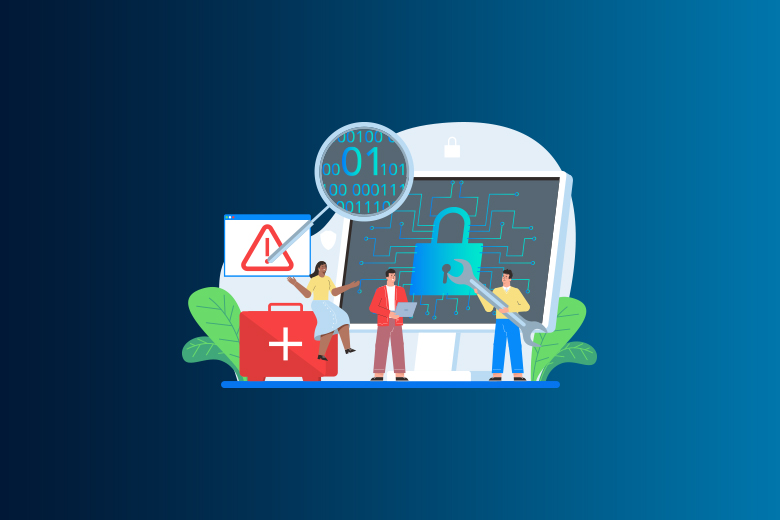14 February 2024
SafeAeon Inc.Cybercrime is expected to cost a huge $10.5 trillion by 2025 (Cybersecurity Ventures), and 81% of all malware cases in 2023 were ransomware attacks (Palo Alto Networks). This means that businesses can't afford to leave digital defenses. Strong means to stop ransomware are important, but testing your defenses against a fake attack is even better. Being proactive about preparation can be your best weapon.
Take a look at these depressing facts:
The number of data breaches caused by hacks has gone up to 62%, showing that the risk is always there. (Source: IBM Safety)
Only 34% of companies do proactive cybersecurity exercises, which means that most of them are not ready for anything that could go wrong. (Source: Verizon Report on Data Breach Investigations)
On the other hand, regular models can lower the financial effects of cyberattacks by an average of 31%, showing that they are useful for limiting damage. Gartner is the source.
When you practice a ransomware attack in a Secure environment, you get the following benefits:
- Identify Vulnerabilities in your security procedures and IT infrastructure before attackers do is important.
- Putting your incident reaction plan through its paces to make sure it works well in a crisis.
- Give your workers the knowledge and skills they required to recognize and mitigate phishing and other forms of social engineering.
- Fine-tuning your communication plan to keep things running smoothly, mitigate risks, and handle a situation well.
This proactive method gives you the power to change the role of victim to victor:
- Cut down on downtime and data loss by a large amount in case of a real attack.
- Develop a mindset of cybersecurity awareness in your company so that every worker is a vigilant guardian.
- Building strong and reliable protection will give you an edge in today's digital world, which is becoming more and more dangerous.
- Are you ready to test your security and make sure that your company doesn't make the news again? This guide gives you the most up-to-date information and tools to plan and carry out a full ransomware attack scenario. By facing the simulated danger head-on, you can strengthen your digital defenses, make your employees more security-conscious, and feel confident navigating the constantly changing cyber world.
101 With Simulate Ransomware Attack
1. Why Do You Simulate Ransomware Attack? You Can Do More Than Test Tech:
It's not enough to just test your technology security systems when you simulate a ransomware attack. It's about being fully prepared, which includes:
- Finding weaknesses: Finding holes in your IT system, security procedures, or even the knowledge of your employees before attackers take advantage of them.
- Putting your incident reaction plan to the test: Putting your plan to the test under stress to make sure it works for making decisions and handling crises in real time.
- You can protect your company from phishing, social engineering, and other human-centered attacks by teaching your workers the right way to Mitigation and Remediation.
- Getting better at communicating: Using clear and concise communication rules to keep things running smoothly, keep trust with stakeholders, and handle the situation well.
2. Why realism is important? Make up a scenario that matches your real life:
It's not enough to just attack your computers with generic malware. Make a realistic simulation situation that matches the threats, industry, and attack vectors that your company faces. Think about things like:
- What kind of information do you keep: Are you a healthcare source that needs to protect private patient data? Are you an e-commerce site that needs to protect financial data?
- Your area of attack: What are your weakest points of entry, like remote access protocols, workers who are easy to trick with phishing, or old software?
- The changing nature of threats: Keep up with the latest trends in ransomware and use them in your exercise.
3. Take charge of the chaos: Set Limits and Have a Plan for Going Back:
Don't forget that this is just a practice drill and not an actual attack. Clearly describe the simulation's goals, length, and people who will be taking part. Set up ways for people to talk about simulated events and have a plan for rolling back changes that could affect systems and data.
4. Metrics and weights:
Keep track of your progress and find places where you can improve:
- Monitor on key measures like
- How quickly did your team figure out that the fake attack was real?
- Response efficiency: How well did your team handle the simulated event and respond?
- Data Loss: How much data was "encrypted" during the test?
- Analyse these metrics and hold debriefings after the simulation to find ways to make your defenses and reaction plan better and be ready for the next time.
5. Be Regular; Don't Let Your Guard Down:
Simulations should not be seen as one-time events, but as ongoing tasks. To keep your security strong and your team ready for a wide range of threats, run simulations with different situations on a regular basis.
6. Get help from professionals: Think about getting cybersecurity specialists:
You might want to get cybersecurity experts involved in planning and running your exercise. Because they are experts, they can make sure that the practice is thorough, realistic, and useful.
7. Go Beyond Ransomware: Broaden Your Views:
Even though ransomware gets a lot of attention, don't just simulate this one danger. You can use them to see how ready you are for different types of cyberattacks, such as:
- Data breaches: Practice what to do in situations where private data is stolen to improve your strategies for protecting data and responding to breaches.
- Phishing attacks: See how well your workers can spot and avoid phishing emails, which are a common way for cyber threats to get in.
- Denial-of-service attacks: pretend that your systems are overloaded with traffic and test how well you can keep them up and running and keep service interruptions to a minimum.
5 Precautions to Consider While Simulating a Ransomware Attack:
It's important to be careful and well-planned when simulating a ransomware attack because it can be a very useful way to see how ready your company is. Here are 5 important safety measures to think about:
1. Clear and open communication:
- Inform all stakeholders: Make sure that all employees, management, and possibly even outside partners who might be involved understand the goal, scope, and length of the simulation.
- Take care of concerns: Allow players to ask questions and voice concerns. Stress that the exercise is under supervision and make sure everyone feels comfortable taking part.
- Keep the lines of conversation open: Set clear rules for how to report simulated incidents and share information during the practice.
2. Environment and scope that can be controlled:
- Set clear boundaries: Limit the attack methods and systems that can be affected so that important data or processes don't get hacked by accident.
- Isolated areas should be used: To keep the simulation from affecting production systems, run it in a separate test setting or on a virtual machine.
- Plan to roll back: Set up a clear plan for getting the systems and data that were affected back to how they were before the exercise.
3. Thoughts on ethics and user privacy:
- Respect the privacy of users: don't use personally identifiable information (PII) during the exercise unless you have their clear permission to do so.
- Learn from mistakes instead of punishing people. The goal is to find and fix weaknesses, not to make people feel bad for making mistakes.
- Make sure ethical approval: Depending on the rules of your organization and the difficulty of the simulation, you may want to get ethical approval from both inside and outside the organization before the simulation.
4. Possible disruptions and downtime:
- Cut down on interruptions: Pick a time for the simulation that won't interfere too much with normal business and user efficiency.
- Inform stakeholders about potential downtime: Before the simulation starts, let users know that there may be short-term problems with some tools or services.
- Prepare for potential outcomes: Plan backups in case the test affects important systems or data by accident.
5. Debriefing and improvement after the simulation:
- Do thorough debriefings. Look at the results of the simulation, figure out where your defenses and reaction plan are weak, and get feedback from the people who took part.
- Set priorities for improvements: Based on what you learned from the simulation, make plans for how to fix any weaknesses you find and improve your security.
- Share what you've learned and the best ways to do things: Send the simulation's results and suggestions to the people in the business who need to see them.
Conclusion
Organizations that want to improve their protection should do exercises that simulate a ransomware attack. This proactive method not only shows you where your identify vulnerabilitieses, but it also gets your team ready to act quickly when challenging situations. Businesses can stay one step ahead of hackers by running these simulations on a regular basis. This lowers the chance that they will be attacked in real life. Remember that being ready is key to being resilient in the digital age. Spending time and money to simulate ransomware attacks is a smart way to protect your company's data, image, and ability to keep running. For expert assistance, you must get in touch with cybersecurity professionals at SafeAeon.














